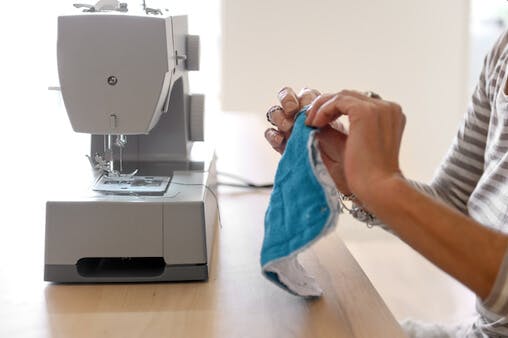Simple Mask Safety Test

We’re sheltered in place. That’s a great thing. But we still need to go out occasionally for the essentials that can’t be delivered to our door. That means we need to start wearing masks as one strategy to help stop the spread of COVID-19.
Since masks are in high demand, people are getting creative and making their own masks at home. But not all masks are created equal. Take Dr. Greene’s simple mask safety test to determine if your mask is effective or not.
Simple Mask Safety Test Video Transcript
Dr. Greene:
[00:00:00] Hi. I am Dr. Alan Greene and I want to talk to you for a moment about homemade masks because not all homemade masks are created equal. They can be great, but some of them are far more effective than others. First, there are all kinds of different fabrics; there’s t-shirts, there’s bandanas and scarves and vacuum cleaner bags, and there’s a number of layers of fabric there are, and I want to give you a simple, powerful way to tell if your mask is doing the job you want.
[00:00:27] So, let me back up just a second and tell you how this whole thing works. If you inhale a Coronavirus particles, then they get into the cells in the lining of your lungs and start to reproduce and reproduce more and more and more viruses, increasing exponentially within 12 hours. So that within three days, well before you often have symptoms of any kind at all, every breath you exhale has millions of virus particles in it. And they travel primarily in tiny, tiny water droplets and they’re invisible to you, but there’s a way you can see them. If you blow onto a mirror and fog the mirror, what you see are those water droplets and they’re there every time, even though you don’t see them, and they’re in the air in the cloud, in front of your face.
[00:01:11] If you cough, probably six feet in front, if you’re standing maybe four or five feet in front, if you’re just breathing probably three feet in front, they’re there as an invisible cloud in the air and then settle and they settle onto the ground in front of you, or if you’re standing in front of a kitchen counter or a bathroom counter onto the counter and create a little veneer there.
[00:01:30] Or if you’re in a grocery store on your cart or on the shelf in front of you, and that’s what you want to block. So different kinds of fabrics. It turns out the N95 masks that we use as physicians and other healthcare providers is named N95 because it blocks 95% of the particles going through. A double layer bandana, maybe only an N16.
[00:01:53] So, you want to choose your fabric carefully, something that the droplets don’t get through and here’s how you tell. Very simply hold it in front of your face and try to fog the mirror. If it’s easy to create, get water droplets on the other side, the mask isn’t doing as good a job as you might say. AA or a bandana may only be an N16. It turns out that high thread count, like a high thread count pillowcase, is better, vacuum cleaner bags, in fact, are great. Flannel works really well.
[00:02:21] I tried with a tee shirt and pulled it up the way the online videos say and fogged the mirror easily. Did it with a hand towel and I can’t breathe through it easily but no fogging in the mirror. More comfortable though I found flannel pajamas and just doing like that, I cannot fog a mirror. It’s comfortable on my face and easy to make something out of. So, check your materials and stay safe.


